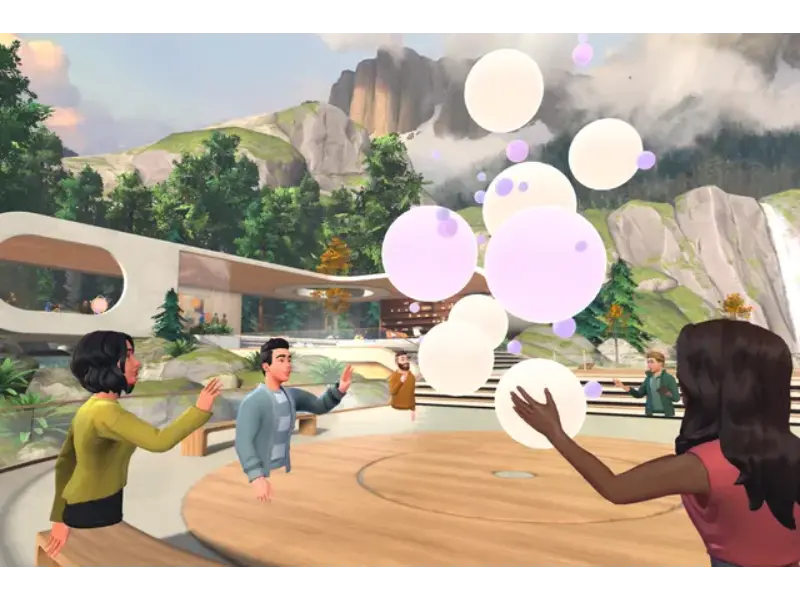- Microsoft is introducing immersive 3D and virtual reality meetings to Microsoft Teams, leveraging its large user base to drive adoption.
- The introduction of immersive meetings provides users with a more interactive and connected collaboration experience, but it faces challenges in widespread commercial adoption and user acceptance.
Microsoft is revolutionizing virtual meetings with the integration of immersive 3D and virtual reality capabilities into Microsoft Teams. By introducing Microsoft Mesh, users can now gather in virtual spaces and collaborate in a more interactive and connected manner.
Microsoft mesh integration
Microsoft has announced the introduction of immersive 3D meetings to Microsoft Teams, marking a significant shift in the company’s approach to virtual collaboration. This move sees the integration of Microsoft Mesh, a mixed reality platform, into Teams, enabling colleagues to gather in virtual spaces with or without VR headsets. Previously, Microsoft envisioned Mesh as a platform for developers built on Azure. However, recent developments reflect a strategic pivot towards integrating it directly into everyday work technologies such as Microsoft Teams.
Also read:AI-powered breakthrough: Microsoft’s revolutionary battery
Industry context and competition
As Microsoft expands its offering to include immersive 3D meetings, it enters a competitive landscape where startups like Jugo, Frame, and Meta are also vying for a share of the immersive meeting space. Microsoft’s advantage, however, lies in its colossal user base of over 320 million Teams users per month, providing it with a vast potential audience for the adoption of Mesh. This move also positions Microsoft in a unique competition with Meta, as they both appear to be fierce rivals while simultaneously fostering surprising collaborative relationships in the realm of VR technology.
User experience and adoption
Having personally experienced Mesh through Meta Quest 3, it’s apparent that Microsoft is driving towards creating a sense of presence and connectivity in virtual meetings. While VR headsets enhance the immersive experience, a 2D version is embedded within Teams, ensuring inclusivity for all users. The spatial audio and voice area features enable natural and simultaneous conversations, addressing the limitations typically encountered in traditional video conferencing tools.
Also read:Microsoft’s Dee Templeton joins OpenAI’s board: Brilliance or interference?
Real-world applications
The integration of Mesh into Teams extends beyond corporate environments, as evidenced by its use by organizations like Mercy Ships, a charitable institution utilizing Mesh to showcase 3D ocean liners for fundraising activities. This demonstrates the potential for Mesh to evolve beyond business applications and into areas such as onboarding and future training experiences.
Future outlook and challenges
While the introduction of immersive 3D meetings appears promising, the industry faces questions around widespread business adoption and the readiness of users to embrace this new form of collaboration. With the growing prevalence of AI across Microsoft’s product suite, the potential for incorporating diverse content and features in 3D meetings is on the horizon. However, the company still needs to convince the world that immersive meetings are indeed the future, especially amid emerging concerns of virtual meeting fatigue and the hype surrounding virtual universes.
As the metaverse continues to evolve, the introduction of immersive 3D and VR meetings in Microsoft Teams underscores the company’s commitment to redefining virtual collaboration and communication. Whether users find themselves strolling through a virtual lakeside cabin or engaging in team-building exercises, Microsoft’s foray into immersive meetings represents a bold step towards shaping the future of work.

